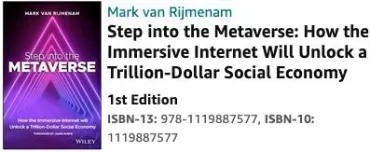Augmented Reality: The New Reality You Can’t Escape

Humans are inherently three-dimensional beings. We navigate, perceive, and interpret the world spatially, yet we primarily interact with technology through two-dimensional devices like smartphones and computers. This limitation is akin to exploring a vibrant world through a narrow window. Functional, but far from optimal. Spatial intelligence promises to widen this window into a seamless fusion of physical and digital realms, creating a “phygital” world.
As advancements in AI, miniaturized hardware, and sensory technologies converge, a hyper-realistic, immersive 3D environment is no longer a distant dream but an imminent reality. This spatially aware ecosystem will redefine human interaction, unlock new economic opportunities, and revolutionize industries, fostering environments that are interactive, adaptive, and immersive.
This article focuses on one of the ten technology trends for 2025.
Read the full trends reportFor this immersive world to succeed, it must achieve hyper-realism, becoming indistinguishable from the physical world to satisfy our brain’s demand for spatial continuity. The fusion of digital physics, generative AI, and ultra-fast computation, driven by platforms such as Genesis discussed earlier, will enable immersive, believable environments where users can interact naturally.
Once this threshold is crossed, augmented reality (AR), virtual reality (VR), and mixed reality (collectively referred to as the metaverse) will open a world of infinite possibilities. Digital identities will thrive, creativity will surge, and the unimaginable will become accessible.
On technology that will see many breakthroughs in 2025 is augmented reality (AR). It will transform from a niche innovation into a more ubiquitous interface, reshaping how we perceive and interact with the world. No longer limited to gaming or entertainment, AR is becoming an essential layer of human experience, merging physical and digital realities in profound ways.
Redefining Reality

So, you might have thought the metaverse was a passing fad, and perhaps even celebrated when AI’s hype pushed it into the shadows. But nothing could be further from the truth. The metaverse is back. Bigger, bolder, and more realistic than ever, thanks to spatial intelligence that will push augmented reality to redefine reality.
Companies such as Meta, Snap, and Vuzix are leading the charge. Meta's Ray-Ban glasses significantly improved in 2024, and their upcoming Orion project aims to make AR an integral part of daily activities. At the same time, the rumored discontinuation of Apple Vision Pro shows that consumers resist expensive, high-quality headsets and will likely use lightweight devices they can wear on the go.
In 2025, AR glasses will redefine how we interact with the world by seamlessly blending digital and physical realities. Lightweight, comfortable designs paired with advanced AI, 5G connectivity, and vision correction capabilities will enable immersive experiences across industries like healthcare, education, and retail. With diverse pricing options and enterprise applications, these innovations promise to drive broader adoption, transforming daily life and professional workflows.
In 2025, the industry will focus on improving mass-market AR glasses, with technical breakthroughs in hardware and operating systems paving the way for future adoption. By the early 2030s, AR glasses may replace smartphones and laptops, as I discussed in my book Step Into the Metaverse.
AR as the New Layer of Perception

AR will enable the overlaying of digital content onto physical spaces, dynamically responding to user actions and environmental contexts. As such, AR will redefine how we learn, work, and connect, offering adaptive training, immersive remote collaboration, and enhanced accessibility for navigating complex environments. Spatial intelligence isn’t just a feature of AR; it is the secret sauce that turns clunky overlays into seamless, ‘I can’t believe this isn’t reality’ moments.
As spatial intelligence evolves, its ethical implications must be addressed. The ability to map and track individuals in physical and virtual spaces raises privacy concerns. Spatial tracking, while enabling personalized and context-aware experiences, risks overstepping into surveillance without proper regulation. As AR improved, privacy concerns are growing, highlighted by recent experiments where students used Meta’s Ray-Ban glasses for real-time doxing of by-passers.
Similarly, the immersive nature of these environments can blur the line between augmentation and intrusion, raising issues of over-dependence or social isolation. Robust privacy frameworks and a commitment to enhancing, rather than replacing, human connection are essential. Questions about data ownership, who controls and benefits from the vast spatial data generated, must also be resolved to ensure public good prevails over private exploitation. Over-reliance on augmentation could also hinder critical thinking, while monopolized AR platforms may restrict user autonomy.
For businesses, it is important to start experimenting with AR in 2025 to enhance productivity and improve customer experiences while learning how to address ethical concerns. At the same time, governments and regulators need to proactively address emerging risks to prevent Black Mirror-style privacy concerns. Balancing the opportunities and risks of AR will shape its trajectory as it becomes an integral part of daily life.
We have only scratched the surface of what the metaverse can achieve. As technology continues to advance, 3D immersive experiences will become more commonplace and reach levels of realism that will further blur the lines between the digital and physical.
Will AR empower humanity or entangle us further in technology’s grasp? 2025 will determine its trajectory.





